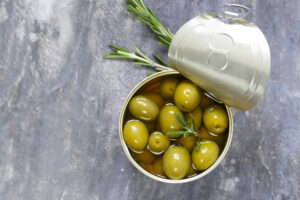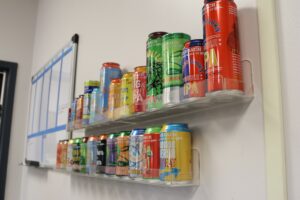Epoxy coatings in food cans: Preserving life for long
 Canned food has become a staple in our kitchens, hospitals, schools and supermarkets. However, as it often happens with everyday items, the many benefits they bring us daily can go overlooked. From easy transportation and storage to a significant reduction of food waste, cans are one of the greatest ways to make sure that food can be consumed at its best for a long, long time.
Canned food has become a staple in our kitchens, hospitals, schools and supermarkets. However, as it often happens with everyday items, the many benefits they bring us daily can go overlooked. From easy transportation and storage to a significant reduction of food waste, cans are one of the greatest ways to make sure that food can be consumed at its best for a long, long time.
Preserving food then…
Not too long ago humans still needed to find creative ways of preserving food. Our ancestors came up with solutions as varied as drying, smoking, pickling, honeying and salting, but these techniques often meant changing the taste or consistency of the food. It was not until Napoleon’s times that the French government called for a new form of conservation, so that the armed forces could be fed during war times. They started sealing foods and beverages in airtight containers using heating systems, inventing the first form of food canning. Shortly after, these first recipients evolved into tin-coated iron cans in the US, a revolutionary system that allowed food to be stored for extended periods. One bad crop year no longer meant food shortage.
…and now
Today metal cans continue to be an integral part of the solution for food preservation, which also contributes to tackling food waste. According to the FAO, poor storage facilities and lack of infrastructure are two of the main causes for post-harvest food losses in developing countries. During the canning process, elevated temperature and pressure are applied to sterilise the food content. After completion, the content is sealed in an airtight and UV protected environment allowing to store the food for long periods of time without any refrigeration or other energy intensive long term storage needs. Thus, food canning is an economical and energy efficient way to stop food from going to waste.
In addition, the long shelf life is not even the most impressive part. The container does not affect the taste, texture or colour of the food, even after years. How is that possible? As it happens with potable water pipes, epoxy coatings make cans resistant to corrosion and prevent any metal traces that could lead to food poisoning from contact with the contents. The success story of epoxies in cans started in 1950, when their resistance against a broad variety of foods with too high or too low pH made it clear that it was a better option than the oleoresins used until then. Scientists soon realised how their versatility was unmatched: flexible, easy to apply, cost effective and adhering really well to metal surfaces.
 Chemical migration – do we need to worry?
Chemical migration – do we need to worry?
The European Food Contact Regulation has set very low migration limits of additives in packaging into food, including for epoxy resins and their constituents. The European law on food contact materials is one of the most stringent in the world and is used as a benchmark globally. EFSA, the European Food Safety Agency, consists of experts coming together from various fields of expertise like regulating authorities or academia. These experts continuously assess, review and re-review substances being used for food or food contact, setting new limits if needed, always ensuring that a large safety margin is maintained.
With this in mind, we can be sure that canned food is not only a convenient solution, but also a safe one. The cherry on the cake? They are very lightweight, resulting in fewer CO2 emissions during their transportation when compared to heavier materials, such as glass. They are also nearly 100% recyclable.
Epoxies ensure that food gets from the field to your plate while remaining tasty, safe and respecting the environment they grow in.
